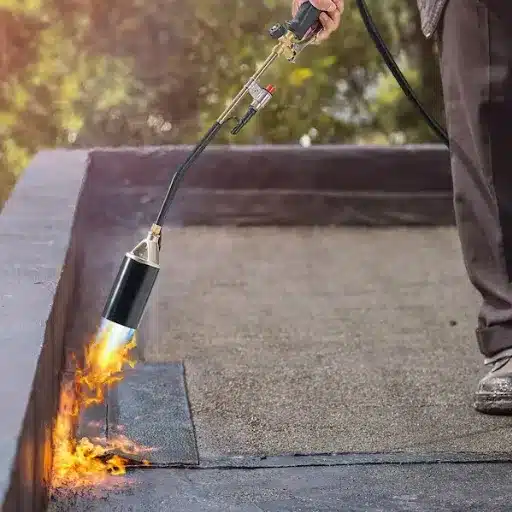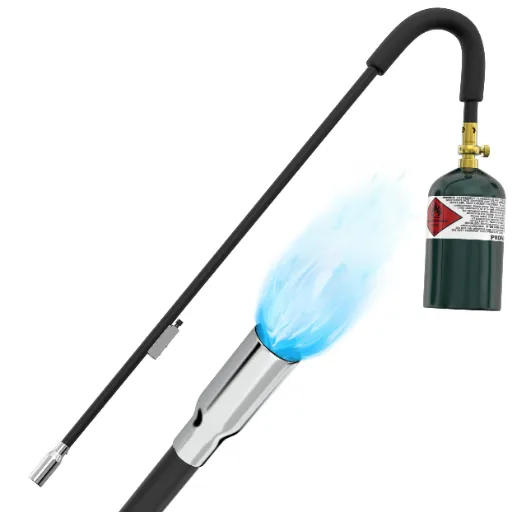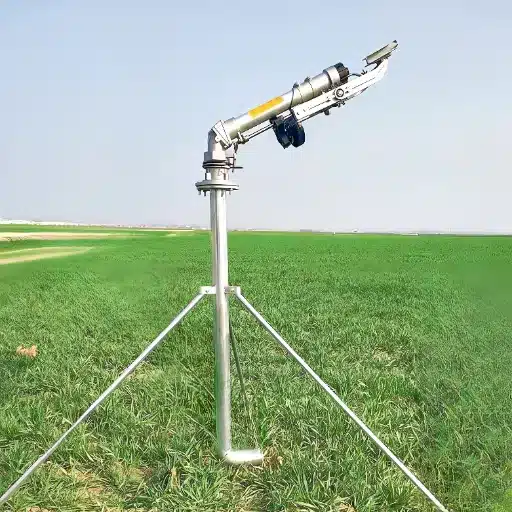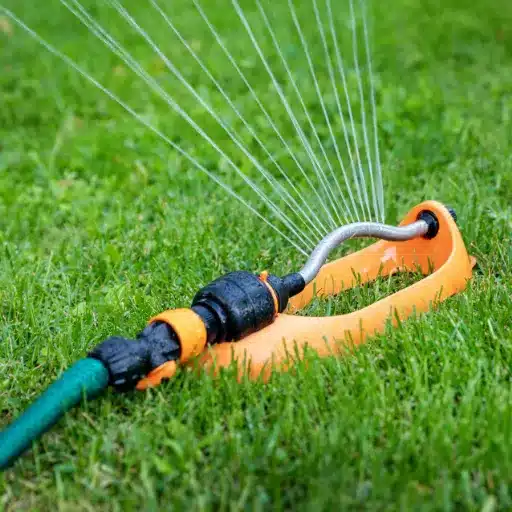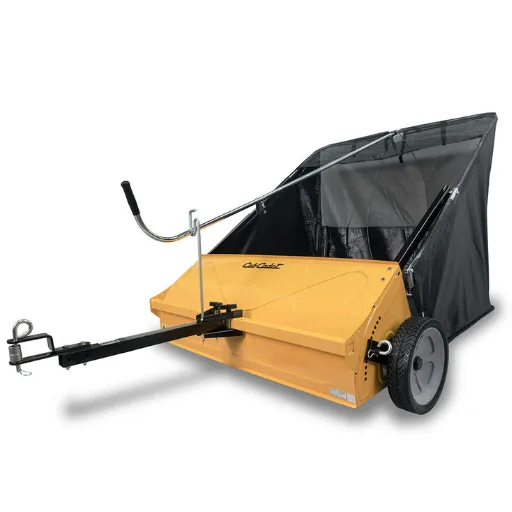Weed burners, also known as flame weeders, are greenhouse-friendly tools that use environmentally friendly methods for weed control without the use of chemicals. These devices utilize controlled heat to disrupt the cell structure of plants, thereby eliminating weeds in targeted locations. One might wonder about the most practical and easily used options for home gardening or similar applications. This article unravels the hidden secrets of weed burners, provides insight into how they work to deal with weed problems, and explains how they can be used effectively. Whether you’re here for purposes of sustainable weed management or want to find out more about eco-friendly land management, you’re in the right place. Stay tuned for insights on how flame weeding brings about changes in the way outdoor spaces are managed in today’s world.
Introduction to Weed Burner
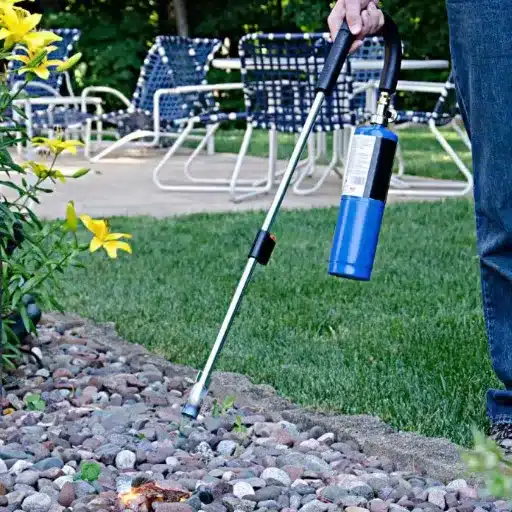
Flame weeders, or weed burners, serve as alternative tools to herbicidal weed control, designed specifically for the destruction of weeds by applying tremendous heat to plant tissues. The weeds are effectively killed by a quick flame applied to them, a process that breaks down the cells in the plant and eliminates it. The important point to note is that the effectiveness of weed burning can be maximized when you understand everything about the system. Weed burners are popular because they can be used in place of chemical weed killers that may be restricted for certain activities and locations due to dangerous, toxic levels. This method doesn’t require brewing chemical solutions like Bordeaux mixture or penetration oils, which could emit dangerous fumes.
Definition of a Weed Burner
A weed burner, flame weeder, or propane torch eliminates unwanted vegetation by utilizing high-intensity flames as a form of heat treatment against unwanted plants. It consists of a nozzle and hose, through which flammable gases like propane or butane are supplied to produce a flame. Weeds will wither away once a flame is brought into direct contact with them, as temperatures created are usually high enough to kill the cells, making this a preventive measure used at the earliest stages of weed development.
Consequently, they are generally a chemical-free solution for weed control. Furthermore, it is practical to utilize the device on different surfaces such as gravel drives, garden pathways, or around fence posts, making weeding possible both in urban and rural settings. The structure of new models considers demands for tool handling and safety, providing user-friendly grips, precisely crafted controls for gas consumption, along with fuel-saving functionalities meeting the requirements of environmentally conscious tools for improving growing conditions.
How a Weed Burner Works
A weed burner operates by directing a concentrated heat source directly to plants. It destroys the plants’ cell walls from the inside, causing the plant to dry out and die naturally without the use of any harmful substances. Most modern weed burners run on propane or other environmentally friendly fuels, making them a popular and eco-friendly way of tackling weeds.
This method is mainly effective on young weeds and can also be preventive before seeds have an opportunity to germinate. To get the best results, thorough treatment is recommended as it reduces the possibility of regrowth. Use these burners especially on dry days for optimal results, as the drying effect reduces the chances of regrowth. Many models also come with adjustable flame levels to provide optimal control for different situations.
Benefits of Using a Weed Burner
Environmentally Friendly Solution
Weed burners exclude chemical use through heat application, providing an eco-friendly option to conventional herbicides. These devices help reduce land and water pollution that results from toxic herbicides. Studies have proven that non-chemical approaches can considerably reduce overall environmental impact by up to 30%.
Effective and Precise Weed Control
Weed burners enable users to focus flames on specific areas and reduce collateral damage to neighboring plants and other objects. This approach is useful for achieving complete weed elimination without harming desirable plants.
Time-Saving and Convenient
Compared to traditional manual weeding techniques, weed burners provide a faster solution for treating wide areas. For instance, the use of a flame weeder can facilitate work twice as fast, especially when working on gravel pathways, driveways, and walkways.
Reduces Future Weed Growth
Using proper weed-burning techniques can prevent most weeds from returning for many seasons. As the number of weeds in a particular area decreases, continuous maintenance of these sites becomes more manageable.
Versatility Across Surfaces
Weed burners are convenient devices that can be used on graveled areas, stone surfaces, asphalt, or between garden beds. This versatility makes them useful in home gardens, along walkways, or in agricultural settings.
Cost-Effective Long-Term
While it may seem expensive to acquire a quality weed burner initially, they eventually save money because you no longer need chemical weed killers or labor-intensive manual weeding. Weed burners are relatively low-maintenance, making them quite useful for maintaining weed-free areas.
Types of Weed Burners

Propane Weed Burners
These are the most common type and are powered by propane gas. They are portable, easy to use, and can be used for weed removal on a wide range of scales.
Butane Weed Burners
These burners are similar to the propane type and are commonly used by backyard gardeners or for small-scale areas. They use butane gas canisters as fuel, which are usually portable and space-saving.
Electric Weed Burners
Electric weed burners utilize heat to destroy unwanted vegetation without needing any gas. These are efficient for smaller gardens or where electrical power is readily available, allowing for temperature adjustment.
Professional-Grade Weed Burners
These burners are heavier-duty and more robust than units made for domestic use. Typically, a larger gas tank is employed to run the device for extended periods.
Handheld Weed Burners
Compact and lightweight options designed for precision work and smaller areas. These models offer excellent control and maneuverability for detailed weed control tasks.
Propane-Powered Weed Torches
Farmers and homeowners with great benefit use a flame weeder that works with propane. These devices are excellent at killing weeds without resorting to chemical substances, making them a wise choice for those who care about nature. The units can heat up to 2000°F, killing any plants that come in contact with them almost instantly. Propane remains the best fuel choice for proper functionality, as it allows for the control and maintenance of the flame at any intensity. These torches are best at eliminating plants growing in hard-to-reach places. They are also more economical over time, especially when compared to the expenses from applying chemical herbicides multiple times.
Comparing Different Models
| Model Name | Weight | Fuel Tank Capacity | Flame Temperature | Key Feature | Price Range |
|---|---|---|---|---|---|
| Red Dragon VT 2-23C | 2.5 lbs | 14 oz | Up to 2,000°F | Lightweight and efficient design | $60-$80 |
| Bernzomatic TS8000 | 1.3 lbs | Compatible with 14.1 oz propane | Up to 2,400°F | Adjustable flame and trigger start | $50-$70 |
| Flame King YSNPQ810CGA | 3 lbs | 20 lb propane tank | Up to 2,200°F | Heavy-duty weed control | $90-$120 |
| Ivation Weed Torch | 2.2 lbs | Compatible with small green canisters | Up to 1,800°F | Compact and ergonomic handle | $30-$50 |
| Hot Max 500G | 5.5 lbs | Multiple tank compatibility | Up to 2,000°F | High-output flame for large areas | $130-$160 |
How to Use a Weed Burner Safely

Step-by-Step Safety Guidelines
- Read the Manual: Make yourself aware of the instructions provided by the manufacturer for your specific machine. It is vital to understand this necessary information before using the burner.
- Choose the Right Environment: Use the burner in open, dry areas that are clear of flammable materials like dry grass or fallen leaves. Ensure not to use this equipment when the wind is too strong to avoid fire spreading.
- Wear Protective Gear: Wear heat-resistant gloves, safety goggles, and closed shoes whenever using the equipment. This protects you from heat, sparks, and potential accidents.
- Inspect the Equipment: Make a thorough inspection for any leakage, broken hoses, tanks, or burner components before turning it on. Ensure all connections are tightly fixed.
- Light Safely: Ignite the burner using the trigger start or a long match from a safe distance. Never light the device in windy conditions or near flammable materials.
- Control the Flame: Adjust the flame to the appropriate level for your task. Using a flame larger than necessary may cause unintended damage.
- Stay Attentive: Keep a fire extinguisher or water source nearby that can be used immediately in case of emergency. Never leave the weed burner unattended while in operation.
- Turn Off Properly: Upon completing the job, turn off the gas supply and allow the burner to cool completely before storing it.
Safety Gear and Precautions
When operating in potentially dangerous areas, personal protective equipment is crucial to ensure safety. Heat-resistant gloves are essential when working with hot instruments to protect hands from burns. Fire-retardant clothing should be worn to provide additional protection and reduce the chance of sparks reaching the skin. Safety glasses protect eyes from debris, bright flames, or chemical splashes. Proper footwear with good grip minimizes injury risk from slips or falls.
Keep the working area clean and free of items that could be flammable or hazardous. Ensure all equipment is used safely in accordance with manufacturer guidelines. Proper ventilation is important when working with gas or heat to reduce exposure to potentially dangerous fumes. Always keep a first aid kit available and be prepared to handle emergency situations promptly.
Best Practices for Flame Weeding
Flame weeding can be an effective solution for rural and urban weed management. This process works by passing a flame over weeds to eliminate moisture within their tissue systems. Operations often involve applicators and weeders with tanks for fuel supply.
For best results, it is recommended to use flame weeding at short intervals, aimed at partially killing weeds rather than completely burning them. This is because overheating may kill beneficial organisms in the soil. Some weeds may require multiple treatments over time. When proper techniques and safety measures are applied, flame weeding can be positively implemented in weed control activities.
Pros and Cons of Using a Weed Burner
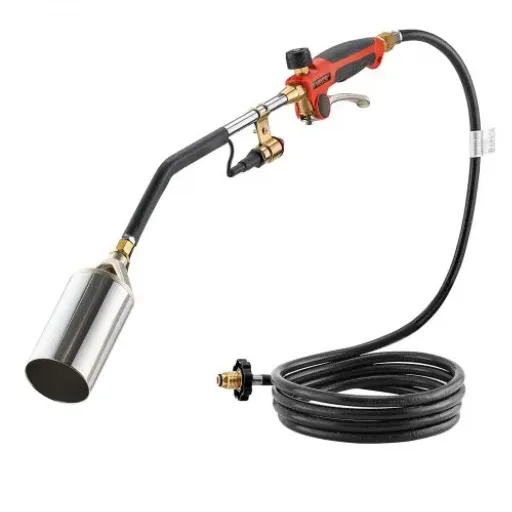
Pros of Using a Weed Burner:
- Eco-Friendly Option: Organic farming control method without chemical herbicides, safer for health and the ecosystem
- Effective on Young Weeds: Most effective at the early stages of weed development
- Reduced Soil Disturbance: Benefits include a lack of tillage and preserved soil structure
- Cost-Efficient Over Time: Low operational costs after initial purchase, mainly requiring fuel
Cons of Using a Weed Burner:
- Fire Risk: Significant burning risk, especially in dry or windy weather conditions
- Limited Effectiveness on Mature Weeds: Little to no effect on established plants with extensive root systems
- Requires Repeated Application: Some weed types may regrow, requiring multiple treatments
- Potential Impact on Soil Organisms: High temperatures can affect beneficial soil organisms if not properly controlled
Advantages Over Traditional Weeding Methods
Eco-Friendly Alternative
Thermal weed control eliminates the need for chemical herbicides, reducing environmental pollution and water contamination. Studies report emission reduction of chemicals by 60% compared to traditional herbicides.
Time Efficiency
Unlike hand weeding, thermal weed treatment can be applied to larger areas in shorter time periods. Research shows that thermal weed treatments can handle up to 2 acres in the same time that half an acre can be weeded manually.
Selective Application
This method enables narrow targeting of treatment, reducing impact on surrounding plants and essential crops. This ability is particularly effective in small-scale organic agriculture.
Reduced Labor Demand
Compared to hand weeding, which is labor-intensive and physically exhausting, thermal methods require fewer people for weed control. Farms practicing thermal weed treatment typically reduce labor hours by around 25%.
Immediate Results
Thermal techniques show visible results almost immediately as plant tissue responds to heat application. Unlike herbicides, which may require days or weeks to show results, heat treatment provides immediate visual feedback.
Adaptability to Various Conditions
Specific climate conditions do not limit most thermal methods and do not involve weather-related restrictions in their application.
Disadvantages and Limitations
Limited Depth of Effect
Most thermal weed-killing techniques are superficial, destroying only above-ground plant parts. This is why weeds may regrow, particularly perennial types with intact root systems. Research indicates regrowth rates of 50-60% under certain conditions.
Energy-Intensive Process
These techniques often require significant energy, particularly flame-based or hot water systems. Propane-fueled flame weeders consume substantial fuel per acre, raising ecological and economic concerns.
Time-Consuming for Large Areas
Thermal methods require careful handling and are less efficient for large areas than chemical herbicides. Treating one acre with a flame weeder may take 4-6 hours, depending on operator speed and weed coverage.
Higher Initial Cost
Specialized equipment, such as infrared torches or steam systems, comes with increased purchasing costs. Running costs may also be higher than chemical alternatives, particularly challenging for small-scale farmers.
Risk of Unintended Damage
Thermal methods can potentially harm nearby desirable plants if not applied carefully. High heat levels can cause unintended damage to beneficial plants, especially in dense plantings.
Potential Fire Hazards
Flame weeders present fire risks during operation. Uncontrolled fires can occur, especially in dry conditions with combustible vegetation present.
Final Thoughts on Flame Weeding
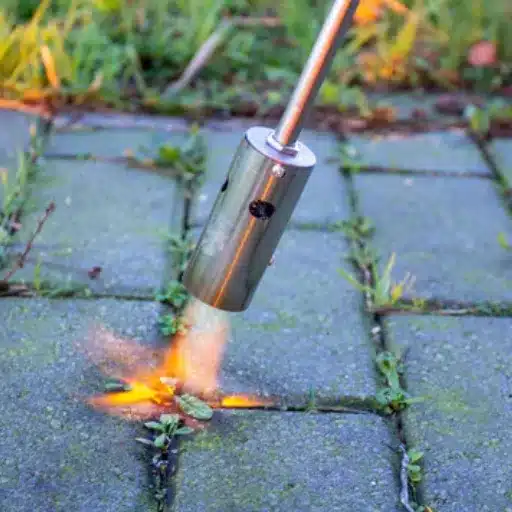
The practice of flame weeding has become popular and is considered a welcome choice for those eager to discover other practical ways of dealing with weeds other than chemicals. The above is mainly due to the fact that this form of farming and gardening does not use chemical substances for weed control. The overall technologies behind the other factors of this method are highly appreciative. However, this method still has some disadvantages, such as the possibility of harming nearby plants and the potential for fire in such dry conditions. Adequate protective measures, operating strategies, and weather assessments are also among the means used to prevent such dangers. However, while the method should be used, those intending to use it must do so judiciously.
When to Choose a Weed Burner
Several factors need to be considered when deciding whether to use a weed burner for effective results that meet your needs. Weed burners are particularly relevant when chemical weed control is not desired, such as in organic farms or gardens practicing sustainable methods. They are efficient for controlling young weeds because heat destroys cells quickly. They work well on driveways, patios, and pathways where traditional tools are difficult to use.
Weather conditions are critical – heat and wind can easily cause fires. Timing is also important; using weed burners during the early stages of weed development helps reduce regrowth chances. If the goal is efficiency and precision in hard-to-reach areas, weed burners offer chemical-free, environmentally friendly weed control.
Additional Resources for Gardeners
Composting Basics
Learn to create comprehensive composting strategies using various materials from your kitchen and garden. This skill helps manage organic waste properly while addressing soil fertility using natural fertilizers. Search for beginner composting manuals covering methods, suitable materials, equipment, and maintenance schedules.
Pest and Disease Management
Learning proper cultivation techniques is crucial for growing plants without pests and diseases. Try Integrated Pest Management (IPM), which uses natural, ecologically friendly control methods for garden pest management.
Seasonal Planting Guides
Find planting calendars with optimal planting windows for vegetables, herbs, and flowers within your hardiness zone. This maximizes production while maintaining soil health through proper crop rotation throughout the growing season.
Water Conservation Techniques
To address water scarcity concerns, implement water-saving strategies such as drip irrigation, mulching, and selecting drought-resistant plants. These strategies are essential in water-scarce environments while maintaining beautiful gardens.
Native Plant Recommendations
Use native trees and shrubs for ecological gardening, reducing maintenance requirements. Search for regional native plant lists and flora that attract beneficial pollinators.
Tool Maintenance Tips
Maintain and sharpen gardening tools to maximize their lifespan and minimize wear. Gardening becomes easier with properly maintained, ready-to-use tools.
Final Thoughts on Flame Weeding
Flame weeding has become popular as a practical alternative to chemical weed control methods. This farming and gardening approach avoids chemical substances entirely, making it environmentally appealing. The technologies behind this method are highly effective when properly applied. However, disadvantages exist, including potential harm to nearby plants and fire risks in dry conditions. Adequate protective measures, proper operating strategies, and weather assessments help prevent such dangers. Those intending to use this method must do so judiciously and responsibly.
Reference Sources
-
- Summary: This study evaluates three prototypes of open flame burners designed for thermal weed control. The research focuses on the efficiency of these burners in eliminating weeds while minimizing environmental impact.
-
Effect of Setting the Parameters of Flame Weeder on Weed Control
- Summary: This paper explores the impact of various operational parameters (e.g., flame intensity, application speed) on the effectiveness of flame weeders. It concludes that optimizing these parameters can significantly enhance weed control efficiency while reducing fuel usage.
Frequently Asked Questions (FAQs)
Q: How to use a weed burner safely?
A: When using flame weed control, safety is paramount for preventing fire incidents. Research environmental laws in your area, as fire use may be restricted, especially during drought seasons. Keep flames away from flammable materials and remember to switch off the device properly. Wear protective gear, including heat-resistant gloves and safety goggles. Ensure the area is clear of combustible items and handle the torch carefully when approaching easily ignitable materials like dry twigs and leaves.
Q: What are the benefits of using a weed torch?
A: Weed torches provide faster outcomes compared to traditional treatments like chemical sprays. This method effectively eliminates weeds without necessarily killing beneficial plants in the same area. Flame weeders selectively burn common weeds while preserving desirable vegetation. They help protect soil organic matter, beneficial insects, and provide nutrients without adding harmful chemicals.
Q: Can you use a weed burner on all types of weeds?
A: While weed burners offer satisfactory results on many plants, they perform better on annual weeds and small plants with shallow root systems. Weeds with deep root systems might require additional weed control methods or manual extraction. Some plants with tough outer coverings may not produce desired results. Weed burning helps manage unwanted growth, but may not provide long-term effects if seeds remain in the soil. Always assess the types of weeds present to determine if flame treatment is appropriate.
Q: What is the best time to use a weed burner?
A: For efficient application, weed burners are most effective during the early stages of weed growth when plants are actively photosynthesizing. It’s recommended to burn either early morning or late afternoon during cooler periods, as heat penetration in plant tissue is more effective than during temperature spikes. Eliminating weeds during their first-year growth stages is more advisable as they are easier to control and less likely to regrow.



